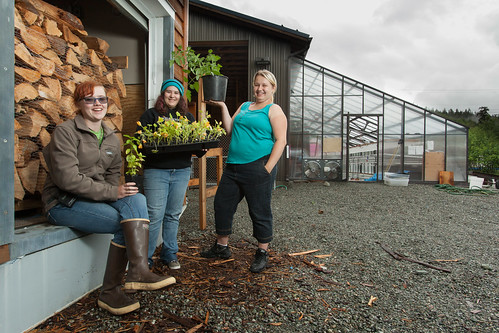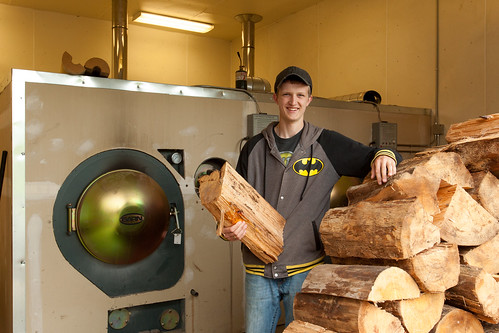
Alaska’s Southeast Island School District operates four bioenergy-heated greenhouses in Thorne Bay, Kasaan, Naukati Bay, and Coffman Cove. Each greenhouse provides fresh produce to the school cafeteria and surrounding communities, jobs for district students, and an opportunity for teachers to bring textbooks to life.
Success stories like this form the basis of the Biomass-Heated Greenhouse Handbook recently published online by the U.S. Forest Service State and Private Forestry Wood Innovations program in partnership with the State of Alaska, Alaska Energy Authority. By showcasing best practices and lessons learned, the handbook serves as a template for others to replicate success.
Functioning as a how-to guide for communities where winters are long, and fresh fruits and vegetables are scare, the handbook breaks down the steps involved in building and operating a wood-energy fueled greenhouse. It also describes the additional benefits of combining these efforts with school programs: Produce from greenhouses can support the school lunch programs, while the activities involved with growing plants and produce and maintaining the wood-energy heating system can be woven into STEM, business, and entrepreneurial education curriculums.
For example, Alaska’s Palmer High School offers a greenhouse production class. Students choose what and how much to plant as they learn about marketing, logistics, and horticulture. In May, the students sell the plants they have been growing.
School administrators and community leaders have also discovered that having an adjacent high-efficiency wood energy system powered by renewable wood energy not only makes the greenhouse affordable, but also promotes energy independence and self-sufficiency by creating new jobs while improving both energy and food security.
“You are paying a local firewood cutter, a local business owner, you are paying a local sawmill operator for the wood and biomass. You are paying someone locally to pack the wood and paying someone locally to stoke the fire,” said Alaska Wood Energy Development Task Group Chair Karen Petersen. “All things being equal, all of that money stays in your community. So that creates that multiplicity effect of dollars staying in a small town. So the person earning the wage can pay their utility bills, buy groceries, and stay in the community.”
This handbook shares the hard-earned knowledge of those who are already implementing separate or combined wood-energy and greenhouse projects – knowledge that helps others to cultivate sustainable, self-sufficient, resilient communities.

